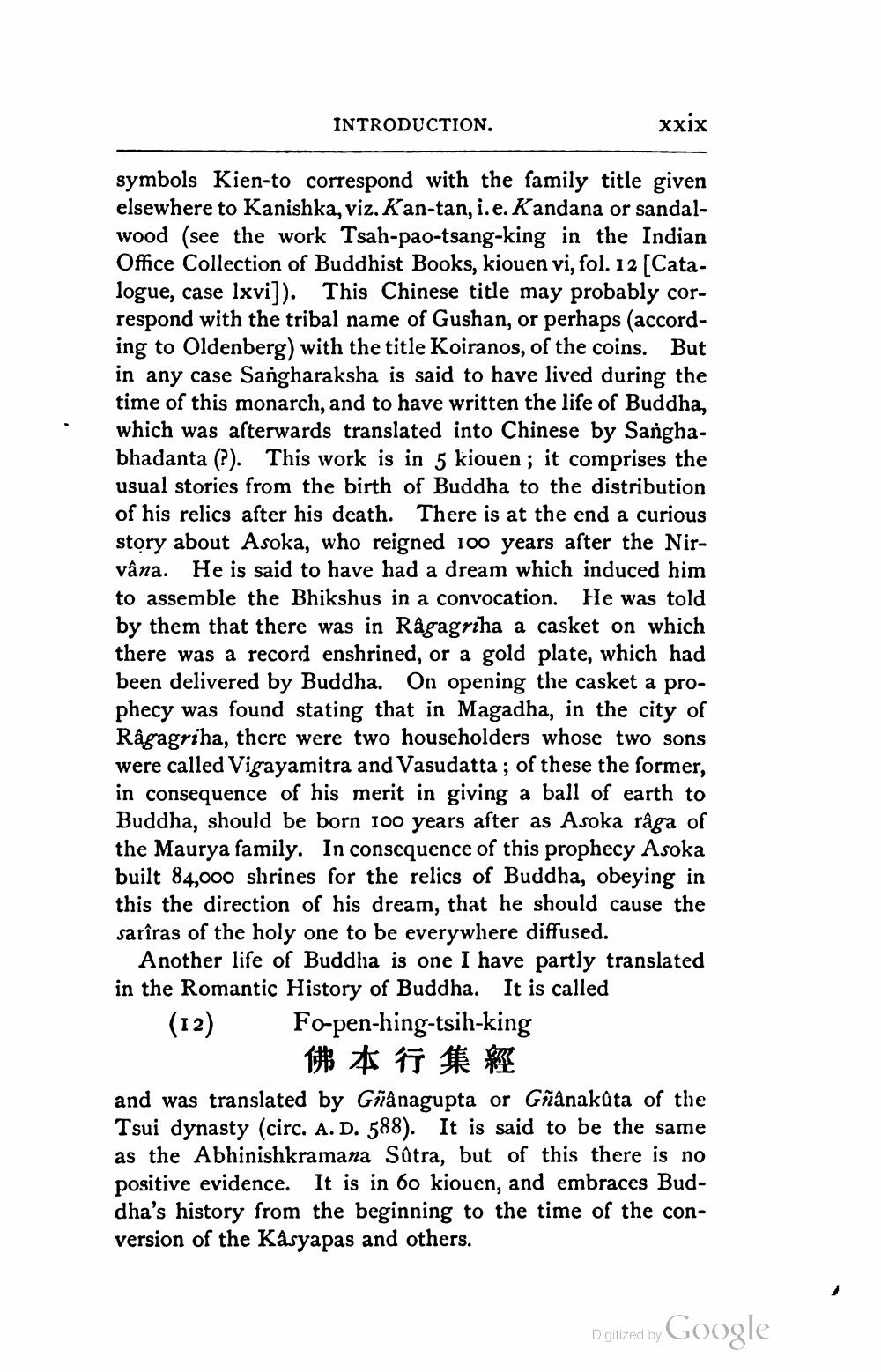________________
INTRODUCTION.
xxix
symbols Kien-to correspond with the family title given elsewhere to Kanishka, viz. Kan-tan, i.e. Kandana or sandalwood (see the work Tsah-pao-tsang-king in the Indian Office Collection of Buddhist Books, kiouen vi, fol. 12 (Catalogue, case lxvi]). This Chinese title may probably correspond with the tribal name of Gushan, or perhaps (according to Oldenberg) with the title Koiranos, of the coins. But in any case Sangharaksha is said to have lived during the time of this monarch, and to have written the life of Buddha, which was afterwards translated into Chinese by Sanghabhadanta (?). This work is in 5 kiouen ; it comprises the usual stories from the birth of Buddha to the distribution of his relics after his death. There is at the end a curious story about Asoka, who reigned 100 years after the Nirvâna. He is said to have had a dream which induced him to assemble the Bhikshus in a convocation. He was told by them that there was in Ragagriha a casket on which there was a record enshrined, or a gold plate, which had been delivered by Buddha. On opening the casket a prophecy was found stating that in Magadha, in the city of Râgagriha, there were two householders whose two sons were called Vigayamitra and Vasudatta; of these the former, in consequence of his merit in giving a ball of earth to Buddha, should be born 100 years after as Asoka råga of the Maurya family. In consequence of this prophecy Asoka built 84,000 shrines for the relics of Buddha, obeying in this the direction of his dream, that he should cause the sarîras of the holy one to be everywhere diffused.
Another life of Buddha is one I have partly translated in the Romantic History of Buddha. It is called (12) Fo-pen-hing-tsih-king
# 17 # and was translated by Gîânagupta or Gñânakata of the Tsui dynasty (circ. A. D. 588). It is said to be the same as the Abhinishkramana Sutra, but of this there is no positive evidence. It is in 60 kiouen, and embraces Buddha's history from the beginning to the time of the conversion of the Kasyapas and others.
Dişlized by Google




